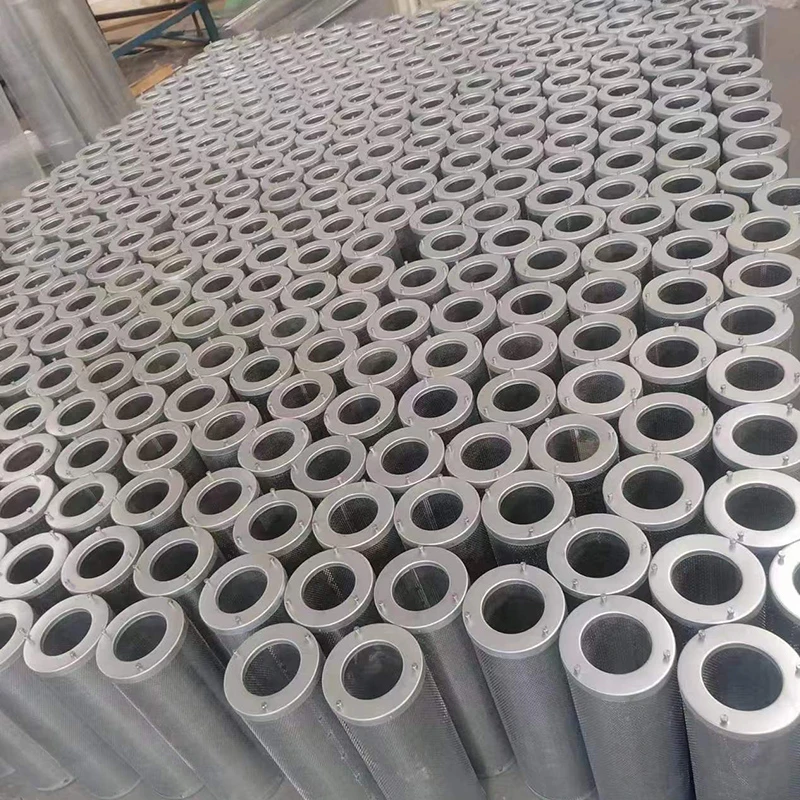 Tel:
+8615930870079
Tel:
+8615930870079
דצמ . 04, 2024 09:14 Back to list
antistatic filter element
The Importance of Antistatic Filter Elements in Industrial Applications
In today’s modern industrial landscape, the efficiency and reliability of machinery and electronic systems are paramount. One often overlooked yet crucial component in ensuring these systems function optimally is the antistatic filter element. As industries increasingly move towards automation and the use of sensitive electronics, the need for effective solutions to combat static electricity is becoming more important than ever.
Understanding Static Electricity
Static electricity is a phenomenon that occurs when there is an imbalance between positive and negative charges in an object. This imbalance can lead to the buildup of electric charges, which can discharge unexpectedly, causing sparks that may damage delicate electronic components, explode flammable materials, or disturb sensitive processes in a manufacturing environment. Industries such as electronics, pharmaceuticals, and food processing are particularly vulnerable to the adverse effects of static electricity.
Static discharge can cause equipment malfunction, data loss, and, in some cases, catastrophic failures that could threaten life and property. By understanding the risks associated with static electricity, industries can take proactive measures to mitigate these hazards, and this is where antistatic filter elements come into play.
What are Antistatic Filter Elements?
Antistatic filter elements are specially designed components utilized in air and liquid filtration systems to prevent the buildup of static electricity. These filters incorporate materials that have conductive properties, allowing them to dissipate static charges safely and effectively. They are commonly used in cleanrooms, laboratories, manufacturing facilities, and any environment where electronic components are produced or handled.
The fundamental purpose of these filter elements is twofold to maintain the purity of the air or liquid passing through them and to prevent static charge accumulation that could threaten equipment and personnel. By combining filtration with antistatic capabilities, these elements ensure that both contaminants and static electricity are managed effectively.
Key Benefits of Antistatic Filter Elements
1. Enhanced Equipment Protection By preventing the buildup of static electricity, antistatic filter elements significantly reduce the risk of electrical discharge that can damage sensitive electronics. This is especially crucial in environments where circuits and components are handled frequently.
antistatic filter element

2. Improved Safety In workplaces that deal with flammable materials, static discharge can lead to explosions or fires. Antistatic filters help mitigate this risk, creating a safer workplace for employees.
3. Increased Efficiency Clean air and liquids are essential for optimal machinery performance. By ensuring that these fluids are free from contaminants and static charges, antistatic filter elements contribute to smoother operations, reducing downtime and maintenance costs.
4. Compliance with Industry Standards Many industries are governed by strict regulations regarding air quality and safety. Utilizing antistatic filter elements can help businesses meet these regulatory requirements, ensuring both compliance and quality assurance.
5. Longer Equipment Lifespan Equipment that is protected from static discharge is likely to have a longer operational life. With fewer failures and maintenance needs, companies can realize significant cost savings over time.
Applications of Antistatic Filter Elements
Antistatic filter elements find applications in various sectors, including
- Electronics Manufacturing Protects sensitive components during production. - Pharmaceuticals Maintains sterile conditions and prevents contamination. - Food Processing Ensures that food products are safe and uncontaminated. - Cleanroom Environments Essential for ensuring that clean rooms remain free of static charges and particulates.
Conclusion
As industries continue to evolve and embrace more advanced technologies, the relevance of antistatic filter elements cannot be overstated. They play an essential role in safeguarding equipment, enhancing safety, and ensuring compliance in various applications. Businesses that prioritize the implementation of these filter elements are likely to experience higher operational efficiency and safety, ultimately leading to improved productivity and profitability. Investing in antistatic solutions is not just a matter of precaution; it is an essential strategy for sustainable industrial success in a rapidly changing environment.
-
Nano Fiber Technology: Revolutionizing Cartridge Dust Collector FiltersNewsAug.06,2025
-
How Activated Carbon Air Cartridges Eliminate OdorsNewsAug.06,2025
-
Dust Filter Cartridge Handling Fine Particulate MatterNewsAug.06,2025
-
Cartridge Dust Collector Filter for Welding Fume ExtractionNewsAug.06,2025
-
Activated Carbon Filter Cartridge Effectiveness Against VOCsNewsAug.06,2025
-
Activated Carbon Air Filter Cartridge Benefits ExplainedNewsAug.06,2025

 Email:
Email:





